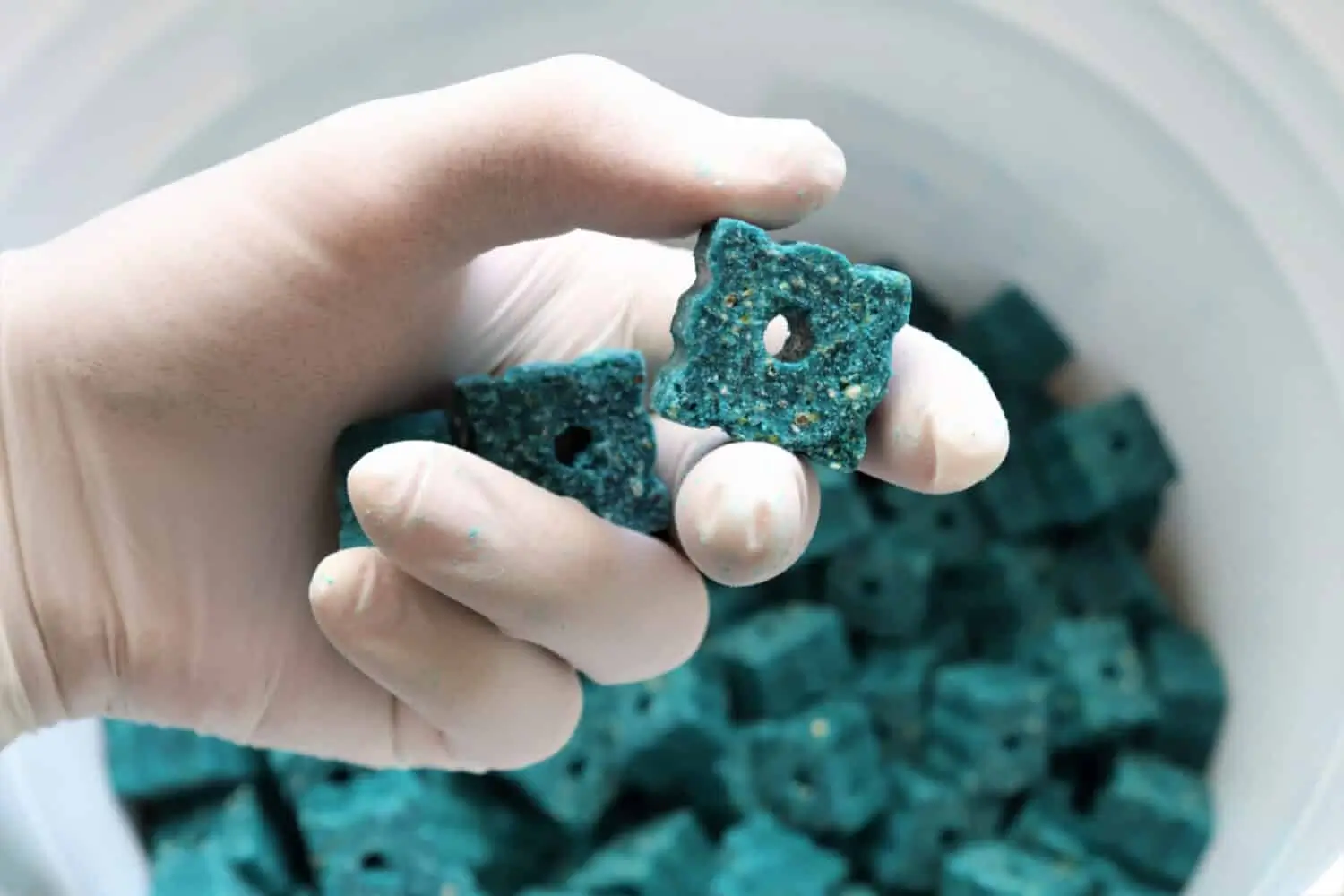
August 24, 2025

Rodents have been a burden to humans for quite some time. They ruin food, gnaw on wires and disseminate dangerous diseases including leptospirosis and salmonellosis. The World Health Organization says rodents inflict billions of dollars in crop and property damage annually. One reason is that a lot of rodents are now resistant to older poisons, like warfarin, which used to be effective but often isn’t anymore. This resistance has resulted in the need for more robust solutions.
Bromadiolone is one such answer. It is a second-generation anticoagulant rodenticide, sometimes referred to as a “super-warfarin.” Unlike older products that made a rodent eat poison several times before it became effective, bromadiolone can eliminate them with only one feeding. This makes it particularly valuable in regions where rats have become resistant to standard poisons.
Bromadiolone is a second-generation anticoagulant rodenticide (SGAR). Chemically, it is a member of the 4-hydroxycoumarin family of compounds, which are also used to stop blood from clotting. It is commonly referred to as a “super-warfarin” because of its potency. Unlike some older poisons like warfarin, which rats had to feed upon repeatedly, bromadiolone kills after one meal.
This agent has been available in the US since 1980. Back in those days, a lot of rodent populations had become resistant to earlier poisons like warfarin. Bromadiolone was created to address this issue, and it quickly became a handy tool for agricultural and urban pest control where rodents were a threat to food supplies and human health.
Bromadiolone is typically offered in pellets or bait blocks. These items are commonly dyed blue-green or red, so they can be easily identified and are not mistaken for food. Although bromadiolone is present in these baits in low levels (typically 0.005% active ingredient), the chemical is still extremely toxic to rodents because of the product’s potency.
Bromadiolone acts by disrupting the body’s ability to clot the blood. It works in a similar way to other anticoagulant rodenticides, affecting key internal chemical reactions that are necessary for life. It is dangerous to both rodents and non-target animals with its power and long-lastingness.
Bromadiolone inhibits the enzyme vitamin K epoxide reductase. This enzyme is required to recycle vitamin K to create clotting factors II, VII, IX, and X in the liver.
When clotting factors are reduced or absent, the blood does not coagulate normally, causing uncontrolled internal bleeding. Even tiny, virtually imperceptible injuries to the inside of the body that normally would heal on their own can be deadly if bleeding does not stop.
Bromadiolone does not take effect immediately.
When symptoms of poisoning appear, the damage is already far along. This delay also reduces the bait-shyness of rodents, as they are less likely to quickly learn to avoid baits that are followed by illness.
Bromadiolone is a much more powerful and long-lived poison than earlier warfarin-based rodenticides.
Bromadiolone is a potent rodenticide and is generally used on the professional front. It can also be used in food storage facilities, warehouses, and similar locations where rodent problems can be burdensome. Due to its strength and hazards, it is not for casual household use.

Bromadiolone is an extremely hazardous substance in the United States. This makes its sale and use highly regulated. According to the Environmental Protection Agency (EPA), consumer products with bromadiolone must be enclosed in bait stations that are resistant to tampering. The stations are constructed to keep children, pets and wildlife out of the bait.
Growcycle carries several rodent solutions and among them two standout options are:
The Motomco Hawk Rodent Bait is one of the trusted bromadiolone-based products at Growcycle. It’s sold in 150 pre-measured 1.5 oz “Place Pacs” for both safety and ease of use.
This is a product used by professionals where rodents have become resistant to the older poisons. With its effectiveness and strength, it is a great option for large or tough infestations.
Motomco Rampage, another excellent product by Growcycle, is based on bromethalin, a non-anticoagulant yet rapid poison.
Professionals often opt for Motomco Rampage, which delivers quick control but they can also closely monitor resulting increased hazard.
Bromadiolone, which is extremely potent, poses lethal risks not only to rats but also to pets, wildlife, and humans if misapplied.
Rodents are extremely responsive to bromadiolone. Often, a single meal proves to be fatal. The poison gradually destroys the body’s ability to clot blood and causes uncontrollable internal bleeding.
Exposure in pets and people can result in a variety of symptoms, including:
It is also particularly problematic that with bromadiolone poisoning the symptoms are not immediately apparent. Onset can be 2 to 5 days, or even longer, making it more difficult to relate exposure to the cause.
Vitamin K1 is the only known antidote for bromadiolone. This medication needs to be administered under medical or veterinary control. Since bromadiolone is a second-generation anticoagulant that can remain in the body for weeks, treatment often is continued for 21 to 30 days. Commonly, clotting times (PT tests) need to be checked and blood tests are also needed to make sure that the patient has recovered.
In the environment, bromadiolone breaks down only slowly. Between 45 and 78% of the chemical can degrade in soil within around 21 days, but some residues can persist for much longer. It does not travel freely through the soil as it stays where people place it.
But bromadiolone is even more stable in water, persisting with a half-life of up to 392 days. This longevity is raising fears of contamination of fresh water supplies and long-term effects on ecosystems.
Although bromadiolone is an effective poison, it is certainly not the only solution for rodent control. Because of its toxicity, longevity, and threat to pets and wildlife, many professionals and homeowners look for safer or more selective options.
Some other active ingredients found in rodenticides:
Mechanical control is safer than chemical, and works well when infestations are lighter:
Physical and Environmental Control
Changing the environment can prevent infestations from taking hold:
Natural predators and biological methods can also help manage rodent populations:
Due to its high potency, bromadiolone rat poison safety requires careful handling. Misuse can pose a real danger to people, pets and wildlife.
Bromadiolone has become one of the key pesticides for rodent control. This poison is capable of killing with just one meal thus being super effective. But its potency also can be dangerous to pets, wildlife and even humans if not used responsibly. So, it should be used cautiously.
Growcycle gives access to rodent control products like bromadiolone, as well as alternatives such as bromethalin. After buying from trusted sources, homeowners and crossover commercial professionals know they’re getting correctly labeled and approved goods that can be used safely.
Disclaimer: This material is for informational purposes only and should not be relied on for legal, medical, financial, or any other form of professional advice.
It is applied as a rodenticide to control mouse and rat infestations, especially when resistance to older poisons is suspected.
Both are superwarfarins; brodifacoum is more potent and longer acting but bromadiolone is also highly active, and sometimes chosen for safer control.
The onset of symptoms following ingestion is typically 2–5 days, with death of rodents occurring a few days after symptoms develop.